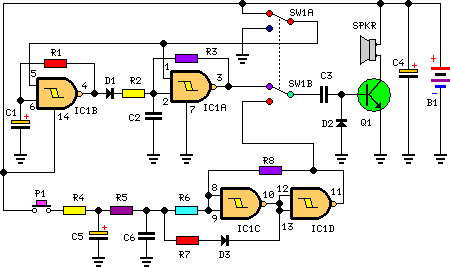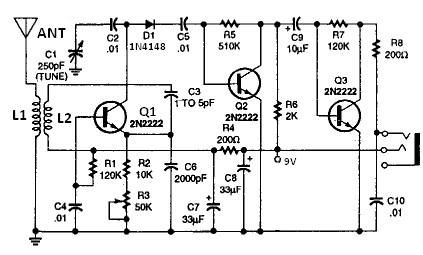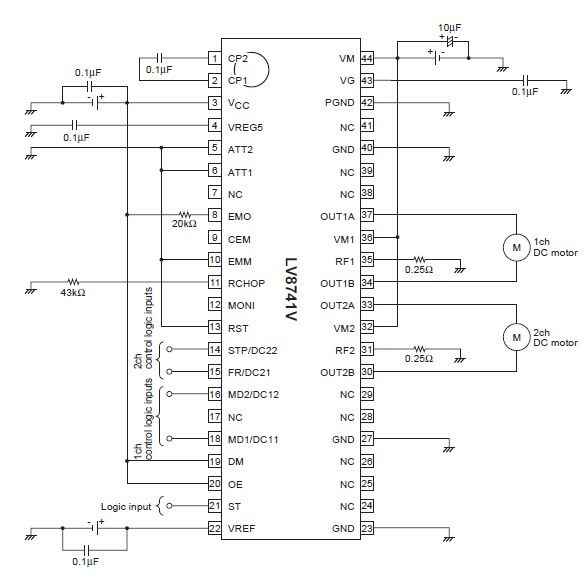
RC Combined voltage starting circuit

The circuit depicted in Figure 3-35 demonstrates a method for starting a motor that transitions to full voltage through a step-down switching process. This approach provides an uninterruptible power supply, effectively preventing issues related to switching currents that may arise from sudden changes in the induced voltage, which can potentially damage motor insulation. Furthermore, this method significantly decreases the required series resistor, typically reducing it by approximately 80%. Consequently, the energy consumption associated with the startup resistor is also reduced by around 80%.
The circuit operates by employing a step-down switching mechanism that allows for a gradual increase in voltage to the motor, thereby minimizing the electrical stress during startup. This technique is particularly beneficial in applications where motor longevity and reliability are critical. The uninterruptible power supply ensures that the motor receives a consistent and stable voltage, which is essential for preventing fluctuations that could lead to insulation breakdown or other electrical failures.
The reduction in series resistor not only enhances the efficiency of the circuit but also contributes to lower heat generation during the startup phase. In traditional motor starting methods, high current levels can lead to significant energy losses, primarily due to resistive heating in the startup resistor. By implementing this advanced circuit design, energy consumption is drastically cut down, leading to both operational cost savings and improved thermal management.
In summary, the circuit in Figure 3-35 exemplifies a sophisticated approach to motor control that prioritizes efficiency, reliability, and reduced energy consumption. Its design mitigates the risks associated with sudden voltage changes while optimizing the performance of the motor during startup. This makes it a valuable solution for various industrial applications where motor operation is critical. Circuit shown in Figure 3-35. The advantage of this approach is to start the motor running from start to full voltage step-down switching over process uninterruptible power sup ply, thus avoiding the process of switching currents caused by a sudden change in the induced voltage of the motor insulation damage. In addition, this method can greatly reduce the series resistor (generally can be reduced about 80 jumping), so when you start startup resistor energy consumption will also be reduced by about 80%.
The circuit operates by employing a step-down switching mechanism that allows for a gradual increase in voltage to the motor, thereby minimizing the electrical stress during startup. This technique is particularly beneficial in applications where motor longevity and reliability are critical. The uninterruptible power supply ensures that the motor receives a consistent and stable voltage, which is essential for preventing fluctuations that could lead to insulation breakdown or other electrical failures.
The reduction in series resistor not only enhances the efficiency of the circuit but also contributes to lower heat generation during the startup phase. In traditional motor starting methods, high current levels can lead to significant energy losses, primarily due to resistive heating in the startup resistor. By implementing this advanced circuit design, energy consumption is drastically cut down, leading to both operational cost savings and improved thermal management.
In summary, the circuit in Figure 3-35 exemplifies a sophisticated approach to motor control that prioritizes efficiency, reliability, and reduced energy consumption. Its design mitigates the risks associated with sudden voltage changes while optimizing the performance of the motor during startup. This makes it a valuable solution for various industrial applications where motor operation is critical. Circuit shown in Figure 3-35. The advantage of this approach is to start the motor running from start to full voltage step-down switching over process uninterruptible power sup ply, thus avoiding the process of switching currents caused by a sudden change in the induced voltage of the motor insulation damage. In addition, this method can greatly reduce the series resistor (generally can be reduced about 80 jumping), so when you start startup resistor energy consumption will also be reduced by about 80%.





